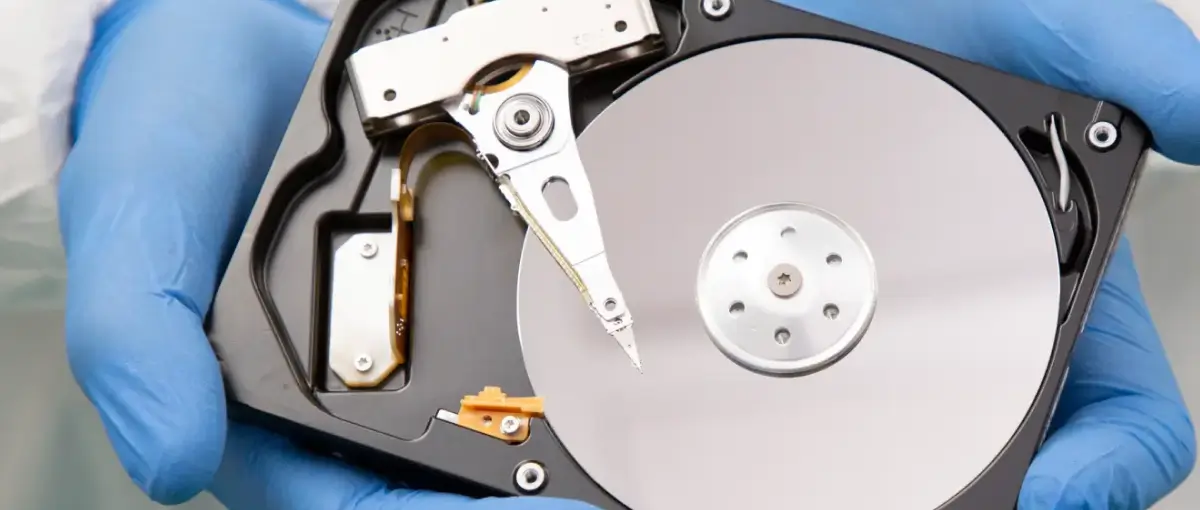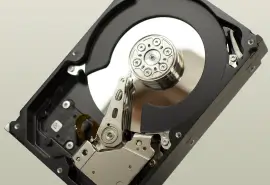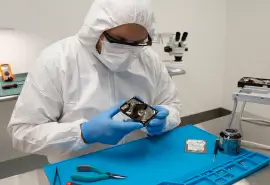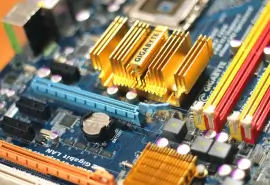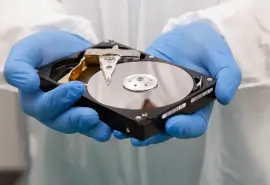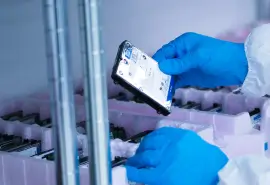Hard disk drives (HDD) are resilient. Despite the emergence of solid-state drives (SSDs), hard disks store most of the world’s data. And hard drives are not being replaced soon, as data storage manufacturers announce more improvements to the traditional device. Secure Data Recovery, the leader in RAID, SSD, and hard drive recovery, offers a glimpse into the future of hard drives and outlines several new technologies.
Next Generation of HDDs
Hard disk drives continue to thrive in the ever-evolving Digital Age. Though manufacturers have phased out most data storage technologies from its era, HDDs are still a versatile, cost-effective option.
Withstanding the test of time was a matter of adaptation and constant development. Nevertheless, electromechanical hard drives remain competitive against high-speed, non-volatile SSDs, which store data in cells instead of moving platters.
Hard drives have survived several generations of computing technology and numerous proclamations of their demise. Today, most insiders project that HDDs are here to stay, as manufacturers perform cutting-edge research and introduce their latest innovations. These technologies push the boundaries of what was thought possible and will shape the data storage industry’s pursuit of greater capacities and speeds.
Here are the promising technologies that will shape the landscape.
OptiNAND (Western Digital)
Announced in the summer of 2021 by Western Digital, OptiNAND is an emerging technology that combines HDDs with embedded flash drives (EFDs). The integration allows for faster, smarter hard drives with higher densities.
OptiNAND reduces the frequency of adjacent track interference (ATI) refreshes, which causes latency and performance degradation, and stores essential metadata in the flash drive for quick indexing and better data management. Furthermore, OptiNAND also benefits from the write-cache function, allowing files to be saved to non-volatile NAND memory to prevent data loss. It maintains data in the write queue even in the event of power loss.
Western Digital believes that OptiNAND will be a crucial technology in achieving its goal of making 50 TB HDDs by 2030.
UltraSMR (Western Digital)
UltraSMR is one of Western Digital’s most recent technological innovations. Announced in January 2023, UltraSMR extends the capacity advantage of shingled magnetic recording (SMR) over conventional magnetic recording (CMR).
UltraSMR is a result of integrating various hardware, software, and firmware technologies, including two-dimensional magnetic recording (TDMR), soft-track error correction code (STECC), distributed sector (DSEC), and OptiNAND. Hence, it is an umbrella term of compiled technologies to support WD’s aspiring plans for ultra-high-capacity HDDs.
UltraSMR overlays tracks on a disk sequentially, creating a tight overlap similar to roof shingles. This arrangement allows more data to be stored in the same space, increasing areal density and storage capacity by 10% compared to current SMR drives and roughly 20% over a CMR drive.
Besides the capacity expansion, UltraSMR also enhances the disk’s inherent ability to correct errors, combining data blocks with redundancy information that can be parsed to identify write deficiencies.
Triple-Stage Actuator (Western Digital)
Triple-stage actuators are advanced actuators for HDDs that enable precise head positioning, improved performance, and allow for higher data density.
The term "triple stage" comes from the actuator's design, which includes three independent pivot points. Namely, the Voice Coil Motor (VCM) actuator, the milli-actuator, and the micro-actuator. VCM is the primary actuator that controls the main arm's movement. The other two are smaller actuators attached to different components on the suspension and use piezoelectric elements to achieve extremely precise positioning over the data tracks. In numbers, the milli-actuator can pivot to 200 nm, while the micro-actuator pivots to 100 nm.
This high-precision positioning enables the disk's read/write heads to reach the data quicker. At the same time, it reduces ringing and seek-induced vibration as the number of internal spins decreases.
Helio-Seal (Hitachi)
Helio-Seal was a technology originally developed by Hitachi before Western Digital’s acquisition. It involves filling hard drives with helium to reduce resistance to spinning disks and heat generation in their components.
Helium allows HDD manufacturers to increase drive capacity by moving platters closer. It also improves reliability and longevity and reduces noise, vibration, and power consumption. The downside is that manufacturers must hermetically seal helium-filled drives to prevent leakage, which increases the cost of manufacturing and total product weight and complicates hard drive recovery efforts.
HAMR (Seagate)
Heat-assisted magnetic recording (HAMR) increases the storage capacity of HDDs by utilizing a nanoscopic laser diode attached to the read/write head. The laser diode creates and parses smaller data bits that are still magnetically stable.
Designers developed HAMR to overcome a fundamental problem with current HDD technology, known as perpendicular magnetic recording (PMR). PMR features spontaneous magnetic polarity flips on data bits positioned very close together. HAMR creates bits on a stable material at room temperature, so the polarity flip is eliminated.
Specifically, Seagate’s HAMR technology uses glass-based platters that reach temperatures as high as 752°F (400°C) and heat sinks to further control the heat flow. The nominal endurance of those drives surpasses 3.2 petabytes of data writes per single drive head per year, which is 20 times higher than the minimum industry standards.
HAMR allows manufacturers to produce HDDs with data densities ranging between 2 and 5 terabits per square inch (Tbpsi), which is almost three times higher than conventional drives. Seagate has stated that it could manufacture HDDs that achieve densities of 10 Tbpsi by the end of the decade due to advancements in HAMR.
MACH.2 (Seagate)
MACH.2 is Seagate’s proprietary multi-actuator technology that aims to improve drive read/write performance.
Conventional drives use a single actuator that moves to a single location on the data plane at a time, but MACH.2 has two independent actuators that can access different parts of the drive simultaneously. The design effectively doubles the drive’s input/output operations per second (IOPS) performance, increases the data throughput, and reduces latency.
Seagate’s performance measurements have shown that MACH.2 uses 40% less power than two single-actuator drives, while achieving a sustained data throughput of 480 MB/sec, which is 60% faster than a 15K drive. That is approximately 20 times higher than the industry requirement.
MAS-MAMR (Toshiba)
Microwave-assisted magnetic recording (MAS-MAMR) is a next-generation recording technology developed by Toshiba and used by Western Digital. MAMR’s goal is to increase the storage capacity of HDDs by enabling manufacturers to increase areal density without sacrificing performance or reliability.
From a technical perspective, MAS-MAMR relies on short bursts of highly targeted, concentrated microwave energy. The energy is generated by a bi-oscillation spin torque oscillator (dual FGL STO), which changes the magnetic orientation of the bits on the drive and enables more data to be stored in the same physical space.
Toshiba claims MAS-MAMR can build HDDs that exceed 30 terabytes without requiring any other advanced technology. Demo models have shown stable performance with areal densities over 4 Tbpsi, but higher figures are expected as the development progresses.
Production difficulties concern the miniaturization of the magnetic grains on the recording medium, maintaining thermal stability, and achieving adequate recording performance. Advancements in micromechanics, physics, and electronics would address all these challenges.
All these challenges are addressed with the help of advancements in micromechanics, physics, and electronics.
NVMe HDDs
Another recent breakthrough is the introduction of NVMe HDDs, which are disks using the non-volatile memory express (NVMe) protocol instead of SATA or SAS protocols.
NVMe is currently exclusive to SSDs, which take advantage of the higher bandwidth and data throughput PCle bus on computer motherboards to maximize performance potential. HDDs switching to NVMe means more standardization in data centers, leading to cost reductions, universal performance enhancements, and significant energy savings at scale. Moreover, NVMe supports multi-actuator technologies. That change alone could lead to drastic performance improvement with the same disk hardware.
In 2023, Seagate presented the first model to integrate the NVMe protocol within the disk controller. More data storage manufacturers are expected to follow, as the NVMe 2.0 protocol announced in 2021 supports all HDDs. The protocol’s benefits guarantee widespread adoption in the coming years.
Impact of Hard Drive Technology on Data Recovery Services
These technologies appear capable of driving HDD development into the future by increasing storage capacity, improving performance, and simplifying architecture.
However, it is essential to note that the technological landscape is complex and ever-changing. As research and development continues, other innovative technologies are likely to emerge and play a pivotal role in shaping the future of hard drives. Conversely, some promising technologies may be abandoned for being more expensive or less practical than anticipated.
Though these developments could improve storage devices for consumers, the technologies could also complicate recovering lost data from hard drives.
As leading data recovery experts, Secure Data Recovery will continue to follow these technologies and understand their impact on retrieving inaccessible files. We have encountered all failure scenarios and resolved over 100,000 cases since 2007. Our 96% success rate in that time and investment in research and development reflects our commitment to innovation and providing the best data recovery services possible. We deliver effective solutions as part of a secure, transparent process.
You can count on us to adapt with technology and remain at the forefront.

